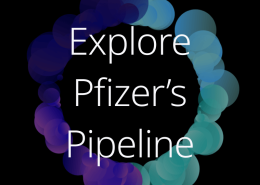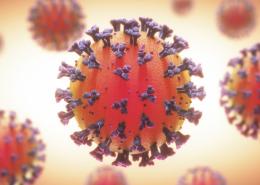Positive Top-Line Results of Pfizer’s Phase 3 Study Exploring Coadministration of PREVNAR 20™ With Pfizer-BioNTech COVID-19 Vaccine in Older Adults Released
NEW YORK--(BUSINESS WIRE)-- Pfizer Inc. (NYSE:PFE) today announced positive top-line results from a Phase 3 study (B7471026) describing the safety and immunogenicity of PREVNAR 20™ (Pneumococcal 20-valent Conjugate Vaccine) in 570 adults in the United States 65 years of age or older when administered at the same time as the Pfizer-BioNTech COVID-19 Vaccine or when each vaccine was given with placebo.
Responses elicited by PREVNAR 20 for all 20 serotypes were similar whether given with a dose of the Pfizer-BioNTech COVID-19 Vaccine (n=190) or with placebo (n=191). Responses to a booster dose of the Pfizer-BioNTech COVID-19 Vaccine were also similar when given with PREVNAR 20 or given with placebo (n=189). The safety profile of co-administering PREVNAR 20 with a booster dose of the Pfizer-BioNTech COVID-19 Vaccine generally reflected that observed with the Pfizer-BioNTech COVID-19 Vaccine booster dose.
“Pfizer is steadfast in its commitment to address the burden of certain respiratory diseases while raising awareness of the importance of adult immunizations,” said Kathrin U. Jansen, Ph.D., Senior Vice President and Head of Vaccine Research & Development, Pfizer. “These new safety and immunogenicity data provide further evidence supporting the potential to administer PREVNAR 20 and the Pfizer-BioNTech COVID-19 Vaccine at the same time, thereby reducing the number of visits adults make to their doctor’s office or pharmacy for recommended immunization. As the COVID-19 vaccines and booster doses continue to be administered, we believe that healthcare providers have an opportunity to talk to their adult patients about other recommended vaccines in line with CDC guidance.”
The initiation of the study exploring the coadministration of PREVNAR 20 along with a booster dose of the Pfizer-BioNTech COVID-19 Vaccine in older adults was announced in May 2021. The study recruited adults from the pivotal Phase 3 Pfizer-BioNTech COVID-19 Vaccine clinical trial and included adults who received their second dose of the vaccine at least six months prior to entering the coadministration study. Pfizer will seek to present and publish detailed outcomes from this clinical trial at a future date. At this time no coadministration data are included in the PREVNAR 20 or Pfizer-BioNTech COVID-19 Vaccine prescribing information.
About PREVNAR 20
PREVNAR 20 is Pfizer’s next-generation pneumococcal conjugate vaccine that includes capsular polysaccharide conjugates for the 13 serotypes (1, 3, 4, 5, 6A, 6B, 7F, 9V, 14, 18C, 19A, 19F and 23F) already included in PREVNAR 13® (Pneumococcal 13-valent Conjugate Vaccine [Diphtheria CRM197 Protein]). The vaccine also contains capsular polysaccharide conjugates for seven additional serotypes (8, 10A, 11A, 12F, 15B, 22F and 33F) that cause invasive pneumococcal disease (IPD),1,2,3,4,5 and have been associated with high case-fatality rates,6,7,8,9 antibiotic resistance,10,11,12 and/or meningitis.13,14 PREVNAR 20 contains the broadest conjugate serotype coverage and helps protect against more strains of the bacteria that cause pneumococcal pneumonia than any other conjugate vaccine available.
On June 8, 2021, Pfizer announced the U.S. Food and Drug Administration (FDA) approved PREVNAR 20, which is the U.S. trade name, for the prevention of invasive disease and pneumonia in adults age 18 years or older. On December 16, 2021, the Committee for Medicinal Products for Human Use (CHMP) of the European Medicines Agency (EMA) issued a positive opinion to recommend the granting of a marketing authorization for the 20-valent pneumococcal conjugate vaccine candidate for the prevention of invasive disease and pneumonia caused by 20 Streptococcus pneumoniae (pneumococcus) serotypes in adults ages 18 years and older in the 27 European Union (EU) member states plus Iceland, Lichtenstein and Norway. The EMA had previously accepted review of Pfizer’s Marketing Authorization Application (MAA) for the 20-valent pneumococcal conjugate vaccine candidate on February 26, 2021.
Pfizer has recently submitted to the FDA a supplemental Biologics License Application to include data in the PREVNAR 20 prescribing information for adults age 18 years or older regarding coadministration of PREVNAR 20 with a seasonal inactivated influenza vaccine.
Pivotal Phase 3 studies of the 20-valent pneumococcal conjugate vaccine candidate in infants are expected to read out in the second half of 2022 and, if positive, form the basis of potential regulatory submissions to the FDA and EMA later this year.
U.S. INDICATIONS FOR PREVNAR 20™
- PREVNAR 20™ is a vaccine indicated for active immunization for the prevention of pneumonia and invasive disease caused by Streptococcus pneumoniae serotypes 1, 3, 4, 5, 6A, 6B, 7F, 8, 9V, 10A, 11A, 12F, 14, 15B, 18C, 19A, 19F, 22F, 23F, and 33F in adults 18 years of age and older
- This indication for the prevention of pneumonia caused by S. pneumoniae serotypes 8, 10A, 11A, 12F, 15B, 22F, and 33F is approved under accelerated approval based on immune responses as measured by opsonophagocytic activity (OPA) assay. Continued approval for this indication may be contingent upon verification and description of clinical benefit in a confirmatory trial.
U.S. IMPORTANT SAFETY INFORMATION
- PREVNAR 20™ should not be given to anyone with a history of severe allergic reaction to any component of PREVNAR 20™ or any diphtheria toxoid–containing vaccine
- Some adults with weakened immune systems may have a lower response to PREVNAR 20™. Safety data are not available for these groups. Your healthcare provider can tell you if PREVNAR 20™ is right for you
- In adults 18 years of age and older, the most common side effects were pain at the injection site, muscle pain, fatigue, and headache
- Ask your healthcare provider about the risks and benefits of PREVNAR 20™. Only a healthcare provider can decide if PREVNAR 20™ is right for you
Please see full prescribing information for PREVNAR 20™.
COMIRNATY® U.S. Indication & Authorized Use
HOW IS THE VACCINE GIVEN?
The vaccine will be given to you as an injection into the muscle.
Primary Series:
In individuals 5 years of age and older, the vaccine is administered as a 2-dose series, 3 weeks apart.
In individuals 5 years of age and older, a third primary series dose may be administered at least 28 days after the second dose to individuals who are determined to have certain kinds of immunocompromise.
Booster Dose:
- A single booster dose of the vaccine may be administered at least 5 months after completion of a primary series of the Pfizer-BioNTech COVID-19 Vaccine or COMIRNATY® (COVID-19 Vaccine, mRNA) to individuals 12 years of age and older
- A single booster dose of the vaccine may be administered to individuals 18 years of age and older who have completed primary vaccination with a different authorized COVID-19 vaccine. Individuals should check with their healthcare provider regarding timing of the booster dose
WHAT IS THE INDICATION AND AUTHORIZED USE?
The Pfizer-BioNTech COVID-19 Vaccine has received EUA from FDA to provide:
- a 2-dose primary series to individuals 5 years of age and older
- a third primary series dose to individuals 5 years of age and older who have been determined to have certain kinds of immunocompromise
- a single booster dose to individuals 12 years of age and older who have completed a primary series with Pfizer-BioNTech COVID-19 Vaccine or COMIRNATY® (COVID-19 Vaccine, mRNA)
- a single booster dose to individuals 18 years of age and older who have completed primary vaccination with a different authorized COVID-19 vaccine. The booster schedule is based on the labeling information of the vaccine used for the primary series
COMIRNATY® (COVID-19 Vaccine, mRNA) is an FDA-approved COVID-19 vaccine made by Pfizer for BioNTech.
- It is approved as a 2-dose series for prevention of COVID-19 in individuals 16 years of age and older
- It is also authorized under EUA to provide:
- a 2-dose primary series to individuals 12 through 15 years of age
- a third primary series dose to individuals 12 years of age and older who have been determined to have certain kinds of immunocompromise
- a single booster dose to individuals 12 years of age and older who have completed a primary series with Pfizer-BioNTech COVID-19 Vaccine or COMIRNATY® (COVID-19 Vaccine, mRNA)
- a single booster dose to individuals 18 years of age and older who have completed primary vaccination with a different authorized COVID-19 vaccine. The booster schedule is based on the labeling information of the vaccine used for the primary series
EUA Statement
Emergency uses of the vaccine have not been approved or licensed by FDA, but have been authorized by FDA, under an Emergency Use Authorization (EUA) to prevent Coronavirus Disease 2019 (COVID-19) in individuals 5 years of age and older. The emergency uses are only authorized for the duration of the declaration that circumstances exist justifying the authorization of emergency use of the medical product under Section 564(b)(1) of the FD&C Act unless the declaration is terminated or authorization revoked sooner. Please see EUA Fact Sheets at www.cvdvaccine-us.com.
IMPORTANT SAFETY INFORMATION
Individuals should not get the vaccine if they:
- had a severe allergicreaction after a previous dose of this vaccine
- had a severe allergicreaction to any ingredient of this vaccine
Individuals should tell the vaccination provider about all of their medical conditions, including if they:
- have any allergies
- have had myocarditis (inflammation of the heart muscle) or pericarditis (inflammation of the lining outside the heart)
- have a fever
- have a bleeding disorder or are on a blood thinner
- are immunocompromised or are on a medicine that affects the immune system
- are pregnant, plan to become pregnant, or are breastfeeding
- have received another COVID-19 vaccine
- have ever fainted in association with an injection
The vaccine may not protect everyone.
Side effects reported with the vaccine include:
- There is a remote chance that the vaccine could cause a severe allergic reaction
- A severe allergic reaction would usually occur within a few minutes to 1 hour after getting a dose of the vaccine. For this reason, vaccination providers may ask individuals to stay at the place where they received the vaccine for monitoring after vaccination
- Signs of a severe allergic reaction can include difficulty breathing, swelling of the face and throat, a fast heartbeat, a bad rash all over the body, dizziness, and weakness
- If an individual experiences a severe allergic reaction, they should call 9-1-1 or go to the nearest hospital
- Myocarditis (inflammation of the heart muscle) and pericarditis (inflammation of the lining outside the heart) have occurred in some people who have received the vaccine, more commonly in males under 40 years of age than among females and older males. In most of these people, symptoms began within a few days following receipt of the second dose of the vaccine. The chance of having this occur is very low. Individuals should seek medical attention right away if they have any of the following symptoms after receiving the vaccine:
- chest pain
- shortness of breath
- feelings of having a fast-beating, fluttering, or pounding heart
- Additional side effects that have been reported with the vaccine include:
- severe allergic reactions; non-severe allergic reactions such as rash, itching, hives, or swelling of the face; myocarditis (inflammation of the heart muscle); pericarditis (inflammation of the lining outside the heart); injection site pain; tiredness; headache; muscle pain; chills; joint pain; fever; injection site swelling; injection site redness; nausea; feeling unwell; swollen lymph nodes (lymphadenopathy); decreased appetite;diarrhea; vomiting; arm pain; fainting in association with injection of the vaccine
- These may not be all the possible side effects of the vaccine. Serious and unexpected side effects may occur. The possible side effects of the vaccine are still being studied in clinical trials. Call the vaccination provider or healthcare provider about bothersome side effects or side effects that do not go away
Data on administration of this vaccine at the same time as other vaccines have not yet been submitted to FDA. Individuals considering receiving this vaccine with other vaccines, should discuss their options with their healthcare provider.
Patients should always ask their healthcare providers for medical advice about adverse events. Individuals are encouraged to report negative side effects of vaccines to the US Food and Drug Administration (FDA) and the Centers for Disease Control and Prevention (CDC). Visit https://www.vaers.hhs.gov or call 1-800-822-7967. In addition, side effects can be reported to Pfizer Inc. at http://www.pfizersafetyreporting.com or by calling 1-800-438-1985.
Click for
Fact Sheets and Prescribing Information for individuals 12 years of age and older
Full Prescribing Information (16 years of age and older) DILUTE BEFORE USE, Purple Cap
Full Prescribing Information (16 years of age and older) DO NOT DILUTE, Gray Cap
EUA Fact Sheet for Vaccination Providers (12 years of age and older), Purple Cap
EUA Fact Sheet for Vaccination Providers (12 years of age and older), Gray Cap
Recipients and Caregivers Fact Sheet (12 years of age and older)
Fact Sheets for individuals 5 through 11 years of age
EUA Fact Sheet for Vaccination Providers (5 through 11 years of age), Orange Cap
Recipients and Caregivers Fact Sheet (5 through 11 years of age)
When prepared according to their respective instructions for use, the FDA-approved COMIRNATY® (COVID-19 Vaccine, mRNA) and the Pfizer-BioNTech COVID-19 Vaccine for individuals 12 years of age and older (purple cap and gray cap) can be used interchangeably without presenting any safety or effectiveness concerns.
Individuals 5 through 11 years can only receive the FDA-authorized Pfizer-BioNTech COVID-19 Vaccine formulation identifiable with an orange cap.
About Pfizer: Breakthroughs That Change Patients’ Lives
At Pfizer, we apply science and our global resources to bring therapies to people that extend and significantly improve their lives. We strive to set the standard for quality, safety and value in the discovery, development and manufacture of health care products, including innovative medicines and vaccines. Every day, Pfizer colleagues work across developed and emerging markets to advance wellness, prevention, treatments and cures that challenge the most feared diseases of our time. Consistent with our responsibility as one of the world's premier innovative biopharmaceutical companies, we collaborate with health care providers, governments and local communities to support and expand access to reliable, affordable health care around the world. For more than 170 years, we have worked to make a difference for all who rely on us. We routinely post information that may be important to investors on our website at www.Pfizer.com. In addition, to learn more, please visit us on www.Pfizer.com and follow us on Twitter at @Pfizer and @Pfizer News, LinkedIn, YouTube and like us on Facebook at Facebook.com/Pfizer.
DISCLOSURE NOTICE:
The information contained in this release is as of January 12, 2022. Pfizer assumes no obligation to update forward-looking statements contained in this release as the result of new information or future events or developments.
This release contains forward-looking information about PREVNAR 20 (Pneumococcal 20-valent Conjugate Vaccine), Pfizer’s efforts to combat COVID-19, the collaboration between BioNTech and Pfizer to develop a COVID-19 vaccine, the BNT162 mRNA vaccine program and the Pfizer-BioNTech COVID-19 Vaccine, also known as COMIRNATY (BNT162b2), including their potential benefits, involving substantial risks and uncertainties that could cause actual results to differ materially from those expressed or implied by such statements. Risks and uncertainties include, among other things, uncertainties regarding the commercial success of our vaccines; the uncertainties inherent in research and development, including the ability to meet anticipated clinical endpoints, commencement and/or completion dates for clinical trials, regulatory submission dates, regulatory approval dates and/or launch dates, as well as risks associated with preclinical and clinical data (including the Phase 3 data), including the possibility of unfavorable new preclinical, clinical or safety data and further analyses of existing preclinical, clinical or safety data; the ability to produce comparable clinical or other results, including the rate of vaccine effectiveness and safety and tolerability profile observed to date, in additional analyses of the Phase 3 trial and additional studies or in larger, more diverse populations following commercialization; the ability of BNT162b2 to prevent COVID-19 caused by emerging virus variants; the risk that more widespread use of the vaccine will lead to new information about efficacy, safety, or other developments, including the risk of additional adverse reactions, some of which may be serious; the risk that preclinical and clinical trial data are subject to differing interpretations and assessments, including during the peer review/publication process, in the scientific community generally, and by regulatory authorities; whether and when additional data from our vaccine programs will be published in scientific journal publications and, if so, when and with what modifications and interpretations; whether regulatory authorities will be satisfied with the design of and results from these and any future preclinical and clinical studies; whether and when any biologics license applications may be filed in any other jurisdictions for PREVNAR 20 for the prevention of invasive disease and pneumonia in adults age 18 years or older and in any jurisdictions for any other potential indications, whether and when submissions to request emergency use or conditional marketing authorizations for a potential booster dose, pediatric populations and/or other biologics license and/or emergency use authorization applications or amendments to any such applications may be filed in particular jurisdictions for BNT162b2 or any other potential vaccines that may arise from the BNT162 program, including a potential variant-specific vaccine, and if obtained, whether or when such emergency use authorizations or licenses will expire or terminate; whether and when the MAA pending in the EU for the 20-valent pneumococcal conjugate vaccine candidate may be approved, whether and when any other applications that may be pending or filed for PREVNAR 20 may be approved by particular regulatory authorities and whether and when any applications that may be pending or filed for BNT162b2 (including any requested amendments to the emergency use or conditional marketing authorizations) or other vaccines that may result from the BNT162 program may be approved by particular regulatory authorities, which will depend on myriad factors, including making a determination as to whether the vaccine’s benefits outweigh its known risks and determination of the vaccine’s efficacy and, if approved, whether it will be commercially successful; decisions by regulatory authorities impacting labeling or marketing, manufacturing processes, safety and/or other matters that could affect the availability or commercial potential of a vaccine, including development of products or therapies by other companies; disruptions in the relationships between us and our collaboration partners, clinical trial sites or third-party suppliers; the risk that demand for any products may be reduced or no longer exist; risks related to the availability of raw materials to manufacture a vaccine; challenges related to BNT162b2’s formulation, two-dose schedule and attendant storage, distribution and administration requirements, including risks related to storage and handling after delivery by Pfizer; the risk that we may not be able to successfully develop other vaccine formulations, booster doses or new variant-specific vaccines; the risk that we may not be able to create or scale up manufacturing capacity on a timely basis or maintain access to logistics or supply channels commensurate with global demand for our vaccine, which would negatively impact our ability to supply the estimated numbers of doses of our vaccine within the projected time periods as previously indicated; whether and when additional supply agreements for BNT162b2 will be reached; uncertainties regarding the ability to obtain recommendations from vaccine advisory or technical committees and other public health authorities and uncertainties regarding the commercial impact of any such recommendations; challenges related to public vaccine confidence or awareness; uncertainties regarding the impact of COVID-19 on Pfizer’s business, operations and financial results; and competitive developments.
A further description of risks and uncertainties can be found in Pfizer’s Annual Report on Form 10-K for the fiscal year ended December 31, 2020 and in its subsequent reports on Form 10-Q, including in the sections thereof captioned “Risk Factors” and “Forward-Looking Information and Factors That May Affect Future Results”, as well as in its subsequent reports on Form 8-K, all of which are filed with the U.S. Securities and Exchange Commission and available at www.sec.gov and www.pfizer.com.
________________________
1 Baisells E, Guillot L, Nair H, et al. Serotype distribution of Streptococcus pneumoniae causing invasive disease in children in the post-PCV era: A systematic review and meta-analysis. PlosOne. 2017;12(5): e0177113.
2 Hausdorff W & Hanage W. Interim results of an ecological experiment – Conjugate Vaccination against the pneumococcus and serotype replacement. Hum Vaccin Immunother. 2016;12(2):358-374.
3 Cohen R, Cohen J, Chalumeau M, et al. Impact of pneumococcal conjugate vaccines for children in high- and non-high income countries. Expert Rev Vaccines. 2017;16(6):625-640.
4 Moore M, Link-Gelles R, Schaffner W, et al. Effect of use of 13-valent pneumococcal conjugate vaccine in children on invasive pneumococcal disease in children and adults in the USA: analysis of multisite, population-based surveillance. Lancet Infect Dis. 2015;15(3):301-309.
5 Metcalf B, Gertz RE, Gladstone RA, et al. Strain features and distributions in pneumococci from children with invasive disease before and after 13-valent conjugate vaccine implementation in the USA. Clin Microbiol Infect. 2016;22(1):60. e9-60. e29.
6 Oligbu G, Collins S, Sheppard CL, et al. Childhood Deaths Attributable to Invasive Pneumococcal Disease in England and Wales, 2006–2014. Clin Infect Dis. 2017;65(2):308-314.
7 van Hoek, Andrews N, Waight PA, et al. Effect of Serotype on Focus and Mortality of Invasive Pneumococcal Disease: Coverage of Different Vaccines and Insight into Non-Vaccine Serotypes. PlosOne. 2012;7(7: e39150.
8 Stanek R, Norton N, Mufson M. A 32-Years Study of the Impact of Pneumococcal Vaccines on Invasive Streptococcus pneumoniae Disease. Am J Med Sci. 2016;352(6):563-573.
9 Harboe ZB, Thomsen RW, Riis A, et al. Pneumococcal Serotypes and Mortality following Invasive Pneumococcal Disease: A Population-Based Cohort Study. PlosOne. 2009;6(5): e 1000081.
10 Azzari C, Cortimiglia M, Nieddu F, et al. Pneumococcal serotype distribution in adults with invasive disease and in carrier children in Italy: Should we expect herd protection of adults through infants’ vaccination? Hum Vaccin Immunother. 2016;12(2):344-350.
11 Tomczyk S, Lynfield R, Schaffner W, et al. Prevention of Antibiotic-Nonsusceptible Invasive Pneumococcal Disease With the 13-Valent Pneumococcal Conjugate Vaccine. Clin Infect Dis. 2016;62(9):1119-1125.
12 Mendes RE, Hollingsworth RC, Costello A, et al. Noninvasive Streptococcus pneumoniae Serotypes Recovered from Hospitalized Adult Patients in the United States in 2009 to 2012. Antimicrob Agents Chemother. 2015;59(9):5595-5601.
13 Olarte L, Barson WJ, Lin PL, et al. Impact of the 13-valent pneumococcal conjugate vaccine on pneumococcal meningitis in US children. Clin Infect Dis. 2015;61(5):767-775.
14 Thigpen MC, Whitney CG, Messonnier NE, et al. Bacterial Meningitis in the United States, 1998–2007. NEJM. 2011;364(21):2016-2025.
Media:
[email protected]
+1 (212) 733-1226
Investors:
[email protected]
+1 (212) 733-4848











